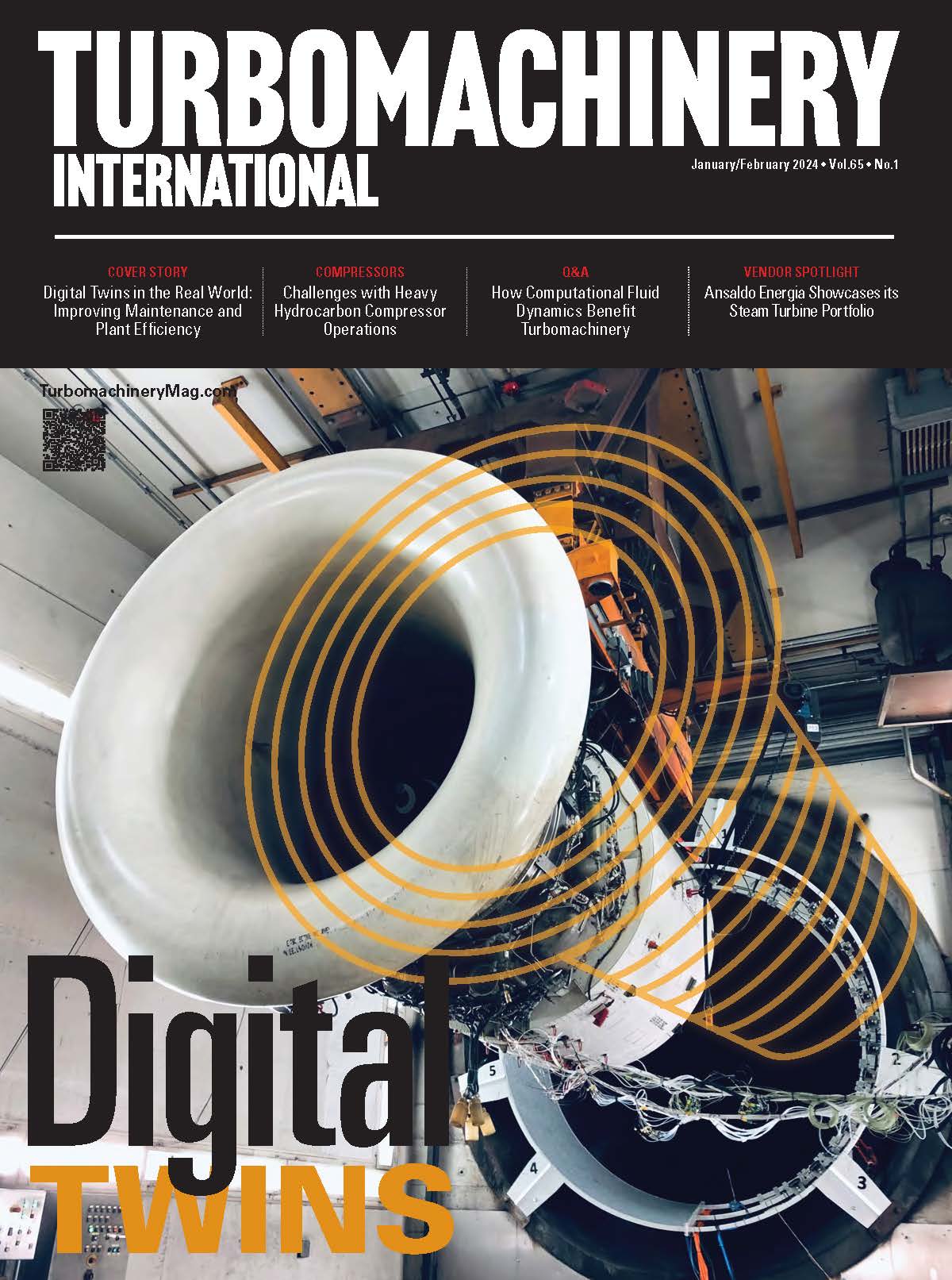Vendor Spotlight: Ansaldo Energia
Ansaldo Energia focuses on decarbonization, efficiency, and sustainability in the design and manufacture of its steam turbine portfolio.
Ansaldo Energia, a power engineering firm, specializes in the design, production, and maintenance of plants and power generation systems, including gas turbines, steam turbines, and generators. Having roots dating back to 1853 with the founding of Giovanni Ansaldo & Co., Ansaldo continues to leverage its 170-year history in thermoelectric and hydroelectric to a variety of power producers and industrial clients. Its headquarters in Genoa, Italy employs more than 3,000 employees across numerous subsidiaries such as Ansaldo Green Tech, Ansaldo Nucleare, and Ansaldo Nuclear Ltd.
STEAM TURBINE OFFERINGS
Steam turbines are the company’s original offering, and it continues to update its designs for modern power requirements. The product range covers a wide berth of applications: power storage, geothermal, non-reheat, reheat, and nuclear. In terms of steam turbine power outputs, these models can range from 15 MW to 1,000 MW. Within the category of steam turbines, which includes the MT10, MT20, MT15, RT30, and RT70, Ansaldo provides several geothermal models based on an impulse or reaction design.
“Geothermal impulse steam turbines developed by Ansaldo can cover a wide range of applications, from 20 MW up to 60+ MW,” said Gian Marco Crespi, Head of Steam Turbine Engineering. “In geothermal applications, specific issues, mainly coming from the geothermal steam and the corrosive environmental conditions, must be addressed. Impulse technology, characterized by a limited number of stages and a compact design, has been demonstrated as a winning solution in extreme geothermal conditions.”
Geothermal steam turbines are subject to harsh conditions during operation, yet not only do they excel in such conditions, but maintenance can also be easily performed by replacing singular parts as soon as the damage occurs. Ansaldo’s impulse design has a limited number of stages and a compact design to perform optimally under the duress of geothermal steam.
Non-reheat steam turbines are manufactured as single- or two-cylinder designs, while reheat steam turbines are usually designed with two or three cylinders. Crespi offered some distinctions between these models to further clarify the purpose of cylinders in steam turbine operation. “The number of cylinders is determined according to the unit size and steam conditions,” he said. “The overall arrangement of the turbine is largely project-specific. A large condensing steam flow rate would generally require a split in one high-pressure (HP) or intermediate-pressure (IP) section and one or more low-pressure (LP) sections, while a reduced steam flow rate would allow the unit to be contained within a single cylinder.”
The split HP and IP sections of reheat steam turbines allow a degree of flexibility in the manufacturing process, as these sections can either be established in two separate cylinders or joined in a combined module. When choosing a reheat or non-reheat turbine, a few aspects should be taken into consideration: the overall plant architecture, costs, efficiency requirements, and simplicity.
High-pressure model being assembled in workshop. Image Credit: Ansaldo Energia

Ansaldo assembles the majority of its equipment in its workshop at the Campi production plant in Genova, but large LP sections are often shipped unassembled due to several limiting factors. Shipping LP sections unassembled allows for ease of installation and transport.
“Usually, HP and IP sections are workshop pre-assembled, shipped, and installed onsite as pre-assembled modules,” Crespi said. “This is the most efficient solution for shipping and reducing site-assembly costs; however, LP sections usually ship disassembled due to their weight and large dimensions. Moreover, LP sections are usually mechanically connected to the condenser, which is installed onsite and is integral to the LP exhaust casing.”
THE FUTURE OF STEAM TURBINE DESIGN
Despite the steam turbine being classified as a “mature” component—one that retains a consistent design with relatively few technological innovations over time—Ansaldo continues to apply and advance its steam turbine portfolio for various power-generation industries, including combined-cycle and nuclear plants. Enhancements in extreme condition operation and the integration of renewable energy resources will secure plant and high efficiency during grid fluctuations. In addition, the company believes that steam turbines’ share of the power-generation market will increase as the technology is used to support micro-distributed generation, “as well as being the core of large and high-efficiency heavy-duty generation plants,” Crespi said. “They will be even more integrated within the industrial and urban framework, such as district heating and co-generation, and will be the basis for some energy storage technologies.”
Low-pressure rotor blade. Image Credits: Ansaldo Energia

Not only will steam turbines benefit from an increase in market share, but advanced control system functionality—such as cybersecurity, autonomous operation, and self-predicted maintenance—may help steam turbines bridge the gap into a digitally enhanced landscape. The integration of steam technology in various power-generation sectors—such as concentrated solar, geothermal, hydrogen, and new nuclear plant solutions—acts as a driver for Ansaldo’s steam turbine innovation.
Current policies require the integration of decarbonization and sustainability strategies, and Ansaldo is committed to these standards. “Besides the original steam turbine mission, which is to make energy transformations more efficient, decarbonization will see the steam turbine as a main player,” Crespi forecasted. “Ansaldo, as a steam turbine OEM, is strongly focused on the decarbonization process and active in designing, manufacturing, and installing a new portfolio of more flexible, efficient, and sustainable steam turbines.”
